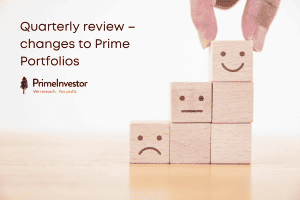
Quarterly review – changes to Prime Portfolios
A few changes in portfolios to capitalise on debt yield and the current market rally

A few changes in portfolios to capitalise on debt yield and the current market rally

You should be able to make do with just 4 to 12 funds in your entire mutual fund portfolio to meet all your goals

Apart from the fund manager’s skill, a hidden factor that explains such return differences is the investment styles in which each fund is managed. Right now, many of the funds that have managed to top the charts with a 16% return are value-style funds, while the laggards are growth-oriented ones.
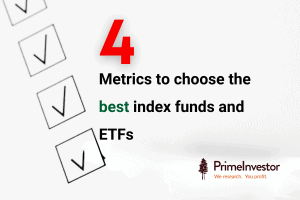
“Which equity fund should I buy?” When asked an open-end question like this, most financial experts recommend an index fund. Choosing an index fund is supposed to be far easier than choosing an active fund from the hundreds of schemes. But the number and variety of index funds in India has mushroomed too. There are about 94 open-end equity index funds, while over 120 equity Exchange Traded Funds (ETFs) are listed on the exchanges. So, if you’re thinking of buying an index fund, how do you choose the right one? Here are four metrics to choose the best index funds and ETFs.

After lying low for a while, gold as an asset class has woken up from its long slumber in the last six months. International gold prices, which fell by 3.3% in 2021 and 0.3% in 2022, have gained 9% so far in 2023 (as of April 11) and are up by 20% in the last six months. In India, gold prices recently bounced off a lifetime high of over Rs 61,000/10 grams, having gained 18% in the last six months. This recent run has made investors sit up and take notice of sovereign gold bonds, gold ETFs and other vehicles to own gold. But should you jump on the bullion bandwagon now?
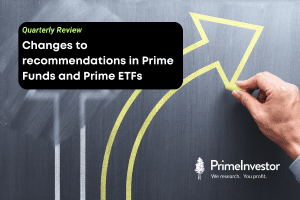
Prime Funds is our list of recommendations in equity, debt, and hybrid mutual funds that are worth investing in. Prime Funds narrows down your choices from the thousands of funds that there are, into a concise list of funds that span different styles. Prime Funds are selected based on performance, portfolios, and investment strategies.
In this quarter’s review, we have made limited additions to our list of Prime Funds but have some updates to give on performance of the existing funds. We also suggest buckets that are worth entering now. So do read it!
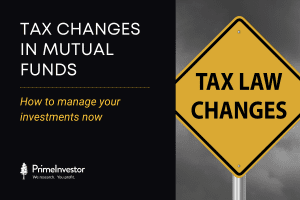
Changes in tax rules at the end of a financial year is not something that you routinely expect. And not when it is a sweeping change on taxation in your mutual fund! In this article, we are going to discuss the tax changes in mutual funds in 4 parts:
One, the changes effective April 1, 2023 and the categories impacted
The tax impact for you and what you can do to plan better
What should you do with your existing investments?
How should you plan your fresh investments?
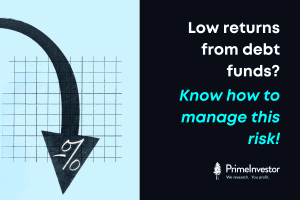
Low returns from debt funds? Know how to manage this risk!
After Silicon Valley Bank revealed large losses on its US bond portfolio that had eaten into its capital, there’s been a lot of social media outrage. Some folks are shocked that banks can make losses on a cast-iron investment such as US treasuries. Others seem to be appalled that Silicon Valley Bank is not alone and that many other global banks are in the same boat. This shows that investors at large have only a vague understanding of what rising interest rates do to bond portfolios.
You have also been bombarding us with questions on how interest rate risks can play out for debt funds, particularly target maturity, constant maturity and gilt funds. We try to address them here.
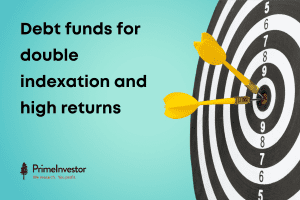
If there is one thing that has dominated the new fund offer space, and your collective interest, it is target maturity funds. Over the past year, the debt market has dealt with a swift rise in interest rates and we have issued multiple strategies to alert you on opportunities that presented themselves.

The Nifty Next 50 houses the 50 top companies by market capitalisation, after the Nifty 50. This index caught the limelight over the past month for featuring a handful of the Adani group stocks.
As we had pointed out a couple of weeks ago in our write-up on Adani stocks and index funds, the presence of a few shaky stocks in an index is not reason enough to exit it. But even before the Adani-fuelled upheaval, the Nifty Next 50’s once-outstanding performance was being eroded.

The top-used product at PrimeInvestor, our MF Review Tool, is good for anyone who wants to know our call on your fund (buy/hold/sell) and the reason for the same. It also helps you pick the funds we have a buy on, if you want to go beyond Prime Funds.
But for those of you who want to see the evidence backed by data or wish to do your own filtering, then Prime MF Screener is the only tool available today in town for you to do this evidence-based investing. If you are a subscriber – well, what’s stopping you from empowering yourself using our MF Screener to pick good mutual fund schemes?
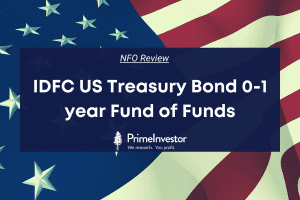
US stocks and US equity funds have been quite a hit with Indian investors in recent years. Indians invest in these funds to gain exposure to global businesses (Amazon, Alphabet, Mastercard etc). More importantly, they would like to gain an exposure to the US dollar which has appreciated steadily against the Rupee over the years.
But the risks in owning US equities have become apparent lately, with the Fed on a rate hiking spree and the US economy flirting with a recession. US stock indices have lost 12-15% in one year, while US equity funds have seen losses of 6%-12%. But there has been a sharp rise in yields on US government bonds (treasuries).
Legal Disclaimer : PrimeInvestor Financial Research Pvt Ltd (with brand name PrimeInvestor) is an independent research entity offering research services on personal finance products to customers. We are a SEBI registered Research Analyst (Registration: INH200008653). The content and reports generated by the entity does not constitute or is not intended to constitute an offer to buy or sell, or a solicitation to an offer to buy or sell financial products, units or securities. All content and information are provided on an ‘as is’ basis by PrimeInvestor Financial Research Pvt Ltd. Information herein is believed to be reliable but PrimeInvestor Financial Research Pvt Ltd does not warrant its completeness or accuracy and expressly disclaims all warranties and conditions of any kind, whether express or implied. The services rendered by PrimeInvestor Financial Research Pvt Ltd are on a best-effort basis. PrimeInvestor Financial Research Pvt Ltd does not assure or guarantee the user any minimum or fixed returns. PrimeInvestor Financial Research Pvt Ltd or any of its officers, directors, partners, employees, agents, subsidiaries, affiliates or business associates will not liable for any losses, cost of damage incurred consequent upon relying on investment information, research opinions or advice or any other material/information whatsoever on the web site, reports, mails or notifications issued by PrimeInvestor Financial Research Pvt Ltd or any other agency appointed/authorised by PrimeInvestor Financial Research Pvt Ltd. Use of the above-said information is at the user’s own risk. The user must make his own investment decisions based on his specific investment objective and financial position and using such independent advisors as he believes necessary. All intellectual property rights emerging from this website, blog, and investment solutions are and shall remain with PrimeInvestor Financial Research Pvt Ltd. All material made available is meant for the user’s personal use and such user shall not resell, copy, or redistribute the newsletter or any part of it, or use it for any commercial purpose. PrimeInvestor Financial Research Pvt Ltd, or any of its officers, directors, employees, or subsidiaries have not received any compensation/ benefits whether monetary or in kind, from the AMC, company, government, bank or any other product manufacturer or third party, whose products are the subject of its research or investment information. The performance data quoted represents past performance and does not guarantee future results. Investing in financial products involves risk. Investments are subject to market risk. Please read all related documents carefully. As a condition to accessing the content and website of PrimeInvestor Financial Research Pvt Ltd, you agree to our Terms and Conditions of Use, available here. This service is not directed for access or use by anyone in a country, especially the USA, Canada or the European Union countries, where such use or access is unlawful or which may subject PrimeInvestor Financial Research Pvt Ltd or its affiliates to any registration or licensing requirement.
The purpose of these disclosures is to provide essential information about the Research Services in a manner to assist and enable the prospective client/client in making an informed decision for engaging in Research services before onboarding. History, Present business and Background: PrimeInvestor Financial Research Private Limited is registered with SEBI as Research Analyst with registration no. INH200008653. The Research Analyst got its registration on August 19, 2021 and is engaged in offering research and recommendation services. Terms and conditions of Research Services: The Research Services will be limited to providing independent research recommendation and shall not be involved in any advisory or portfolio allocation services. The Research Analyst never guarantees the returns on the recommendation provided. Investor shall take note that Investment/trading in stocks/Index or other securities is always subject to market risk. Past performance is never a guarantee of same future results. The Research Analyst shall not be responsible for any loss to the Investors. Disciplinary history: There are no pending material litigations or legal proceedings against the Research Analyst. As on date, no penalties / directions have been issued by SEBI under the SEBI Act or Regulations made there under against the Research Analyst relating to Research Analyst services. Details of its associates: No associates. Disclosures with respect to Research and Recommendations Services: The Research Analyst or its directors or any of its officer/employee does not trade in securities which are subject matter of recommendation. There are no actual or potential conflicts of interest arising from any connection to or association with any issuer of products/ securities, including any material information or facts that might compromise its objectivity or independence in the carrying on of Research Analyst services. Such conflict of interest shall be disclosed to the client as and when they arise. Research Analyst or its directors or its employee or its associates have not received any compensation from the company which is subject matter of recommendation. Research Analyst or its directors or its employee or its associates have not managed or co-managed the public offering of any company. Research Analyst or its directors or its employee or its associates have not received any compensation for investment banking or merchant banking of brokerage services from the subject company. Research Analyst or its directors or its employee or its associates have not received any compensation for products or services other than above from the subject company. Research Analyst or its directors or its employee or its associates have not received any compensation or other benefits from the Subject Company or 3rd party in connection with the research report/ recommendation. The subject company was not a client of Research Analyst or its directors or its employee or its associates during twelve months preceding the date of recommendation services provided. Research Analysts or its directors or its employee or its associates has not served as an officer, director or employee of the subject company. Research Analysts has not been engaged in market making activity of the subject company.
Full disclosures and disclaimers
Other disclosures and disclaimers
Investment in securities market are subject to market risks. Read all the related documents carefully before investing.
Compliance Officer Details: Name: Bhavana Acharya; Email: contact@primeinvestor.
Grievance Officer Details: Name: Srikanth Meenakshi; Email: contact@primeinvestor.
Hold On
You are being redirected to another page,